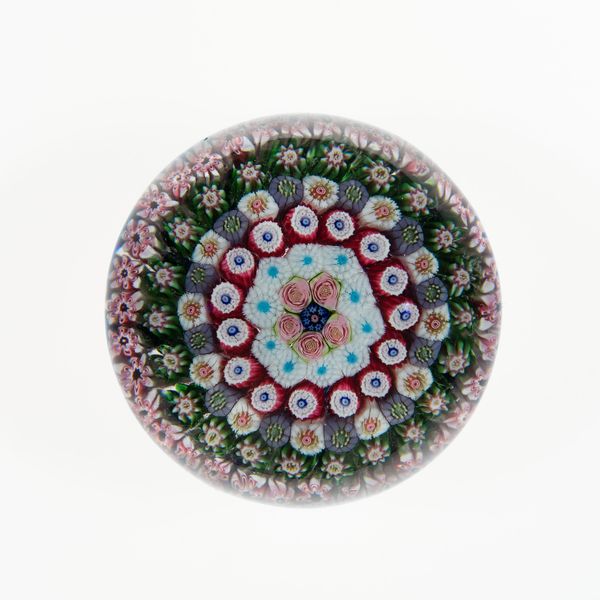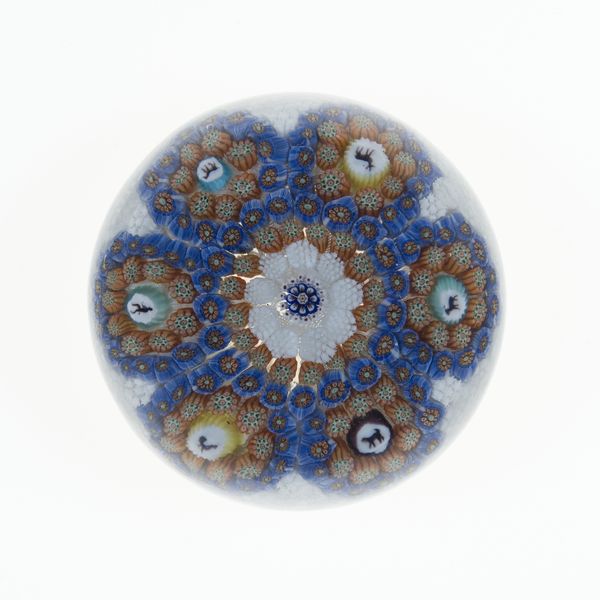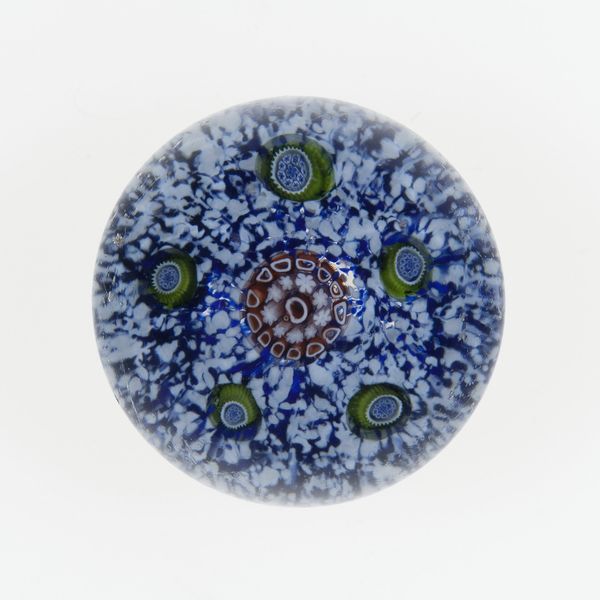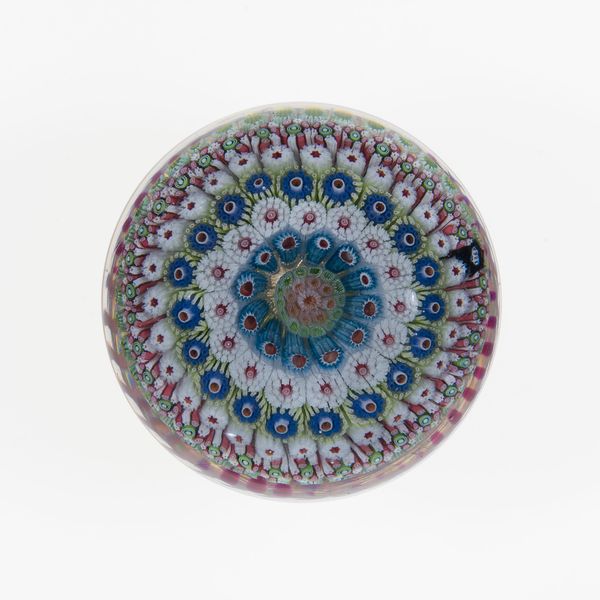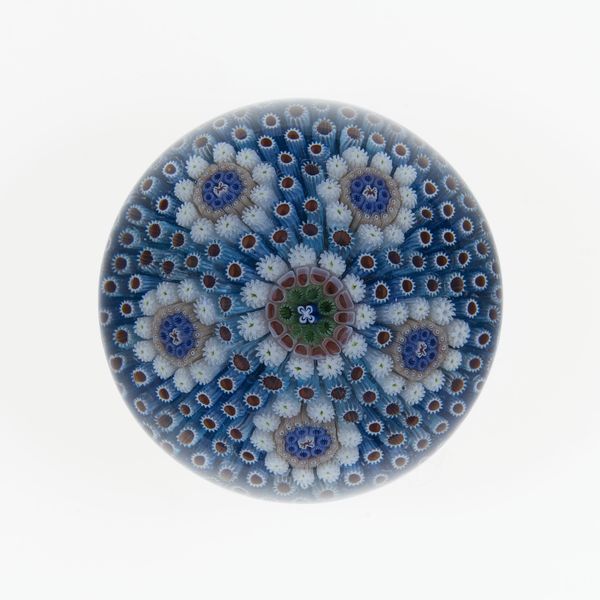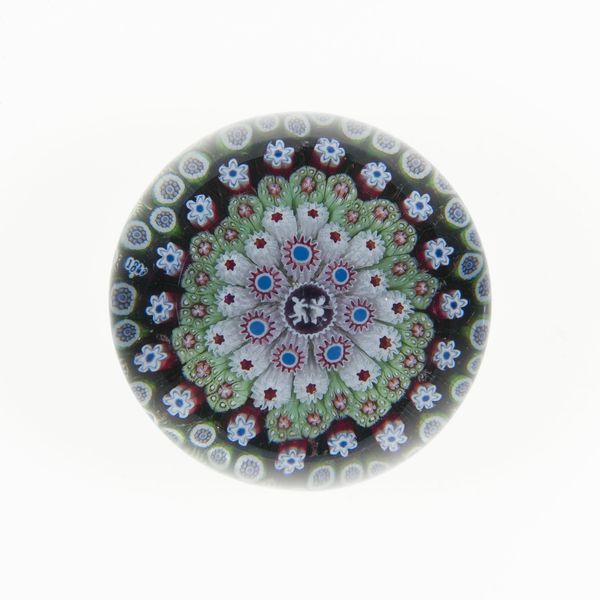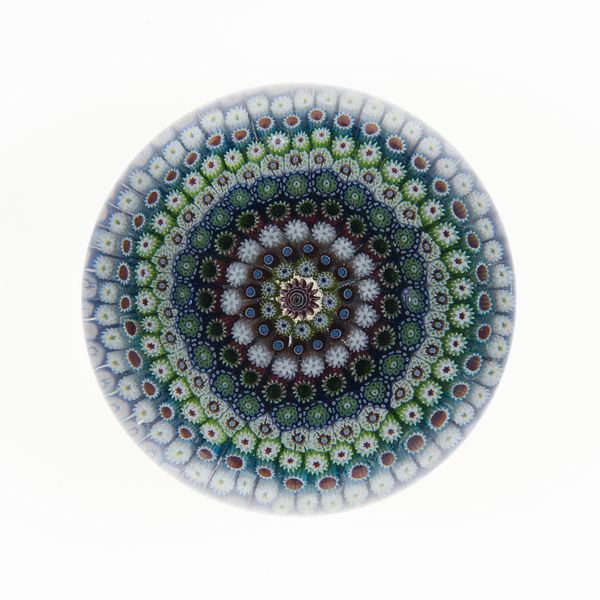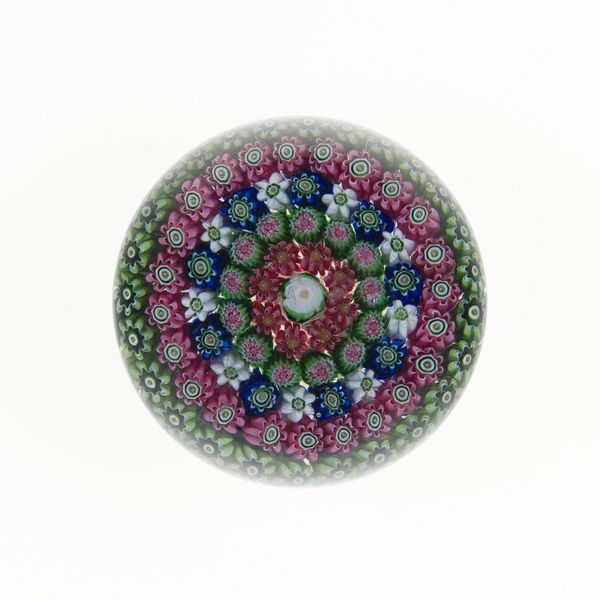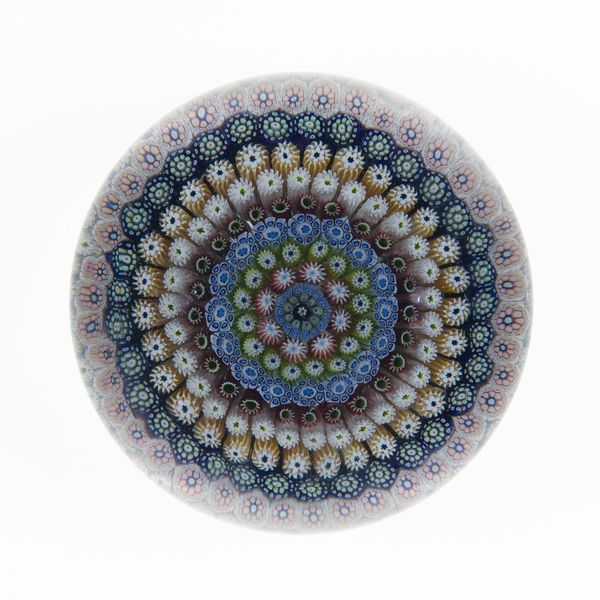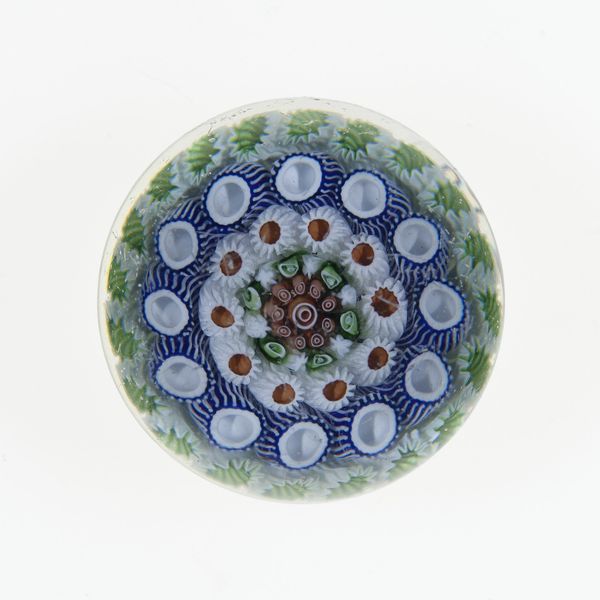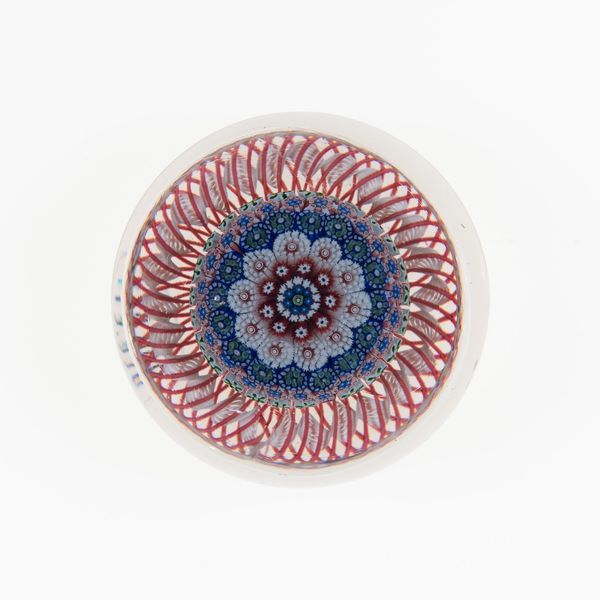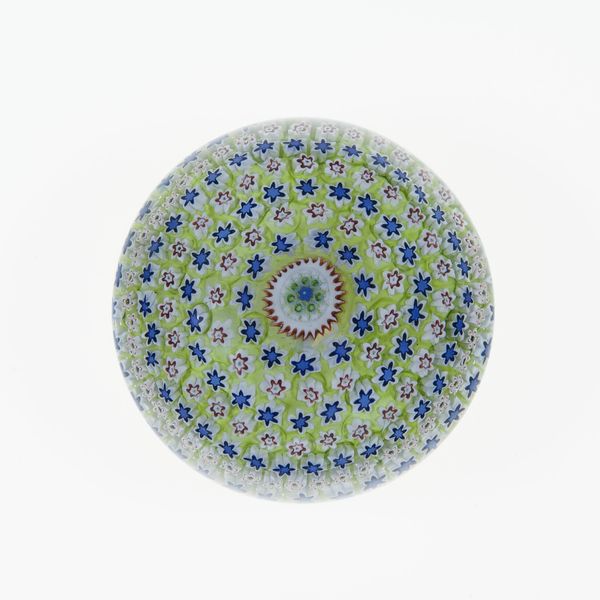
paper, glass
#
paper
#
glass
#
decorative-art
Dimensions: 2 13/16 in.
Copyright: Public Domain
Curator: At first glance, the "Paperweight" feels like a contained universe, its kaleidoscopic patterns drawing you into a world of meticulous detail. Editor: Exactly! And that containment is really telling, isn't it? These were popular in the Victorian era, a time of immense industrial expansion but also rigid social structures. Curator: Precisely. Created around 1848 by the Compagnie de Saint Louis, this object made of glass and paper reflects the complex socio-economic dynamics of its time. Its production would have involved a whole host of social relationships from glassmakers, paper production and the economic forces at play from the decorative arts industries, and finally a buying public in which to acquire the piece and place upon one's desk. Editor: And that arrangement of colors! The red centers feel like points of repressed energy within the cool blues and whites. It speaks to Victorian repression of passions, channeling them into intricate, yet controlled designs. Think about the role women were playing in Victorian society and how their voices may have felt muted within the domestic spheres. Curator: A very valid connection. Paperweights, of course, held down papers, symbolizing a literal holding in place, mirroring the restrictions placed upon women, especially concerning freedom of expression. One thing this symbolism is particularly strong on is the "millefiori" technique itself, using countless tiny glass rods fused together; doesn't that process echo the enforced uniformity of Victorian societal norms? Editor: Absolutely. These weren't mere decorations, but embodiments of a society's values. This period marked changes in how people interacted and related with mass production that became ever so slightly unique through craft, but that production created global forces for good and for bad through a capitalist system. Curator: Ultimately, reflecting how items within museums can provide so many layers of depth, from design to politics, economics to the daily function for the end user of a piece such as this. Editor: So true. It allows us to touch the past but view it critically through our contemporary lenses.
Comments
No comments
Be the first to comment and join the conversation on the ultimate creative platform.

